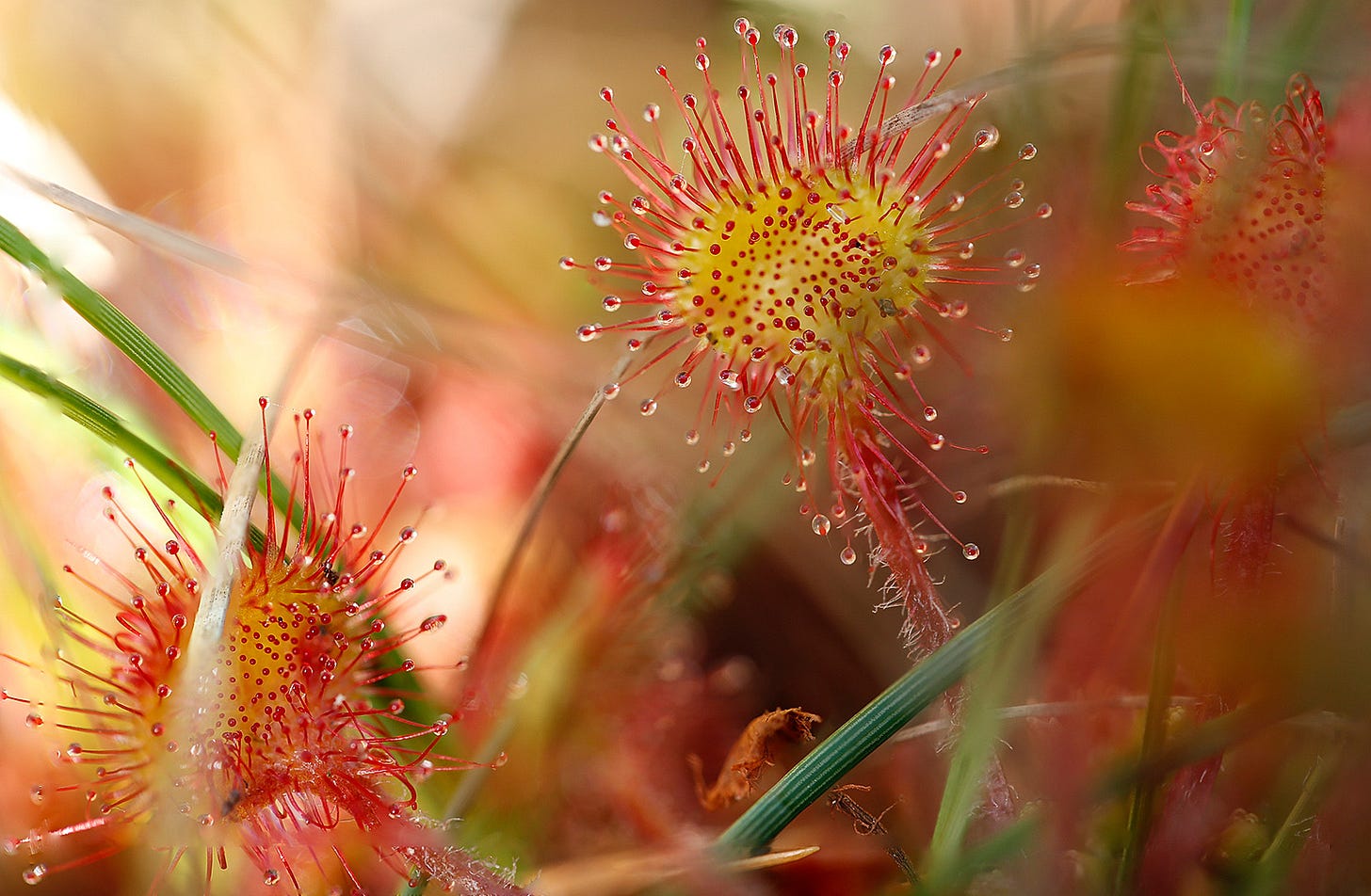Hello from the moss,
Thank you for your kind comments, likes and shares. Somehow my post ended up at No.25 in Substack’s Art and Illustration category on Saturday - which shows how valuable your input is. To those who have subscribed over the last week: welcome to letter number 51.
This time I returned to the moss, and was surprised how much had changed since I was there three weeks ago. My letter to you begins with notes on the weekend, before moving onto the colour of moss.
When the wind blows
Friday. I wake to beautiful cloud, which won’t last long - the wind is vicious.
Over the sea of grasses, through the waves of trees. Ride the surf of pine, coast the flotsam of fallen cone and branch, hear the strain in the rigging of the canopy, edge into the harbour of the moss. Autumn is ready to disembark.
Saturday. When the wind blows I seek the company of trees, the conversation of birds. I follow the deer into the wood, onto the moss. Disturbance of air and mind lifts to the canopy, and softens. Through heather and blaeberry, hare’s tail and fading ladies' tresses I find new colour.
Sunday. Early sun intensifies the ripening rowan on the hill. For a third day, I head for the moss, this time with tripod and a plan for my own layers. On my way I meet a dragon; later the roe buck barks, circles and repeats, clearly annoyed to find he still has company. It’s a rare fine and much calmer day.
The colour of moss
Bog, from the Gaelic and old Scots bogach. I doubt colour enters your mind unless it’s a peaty brown, encountered on a braided path where town and city dwellers try to keep their boots clean.
Moss - the Scots and indeed the old English (pre Henry VIII) term for a marsh, bog, or expanse of soft wet ground - is slightly better, and brings to mind green that may be tinged with yellow.
But what if I told you that nature had opened up the kaleidoscope and scattered the pieces? Would you believe me? In that case, I’ll have to show you.
Flames flicker as bog asphodel leaves turn from green to orange:
As if a flower drawn by a child. A sherbet fountain. If moon and stars collided, imagined by AI but designed by nature. Or according to my iPhone - the fruit rambutan! The beautiful but carnivorous world of tiny round-leaved sundew:
Red and blue - blaeberry leaves are turning.
The colour of August in Scotland - purple ling - and (below) the fading yellow flowers of asphodel.
Why bogs deserve our love
But what is this moss that I haunt, and more broadly, why do bogs matter? They are unique in ecological and hydrological terms, slow to form (1mm of peat a year) and fragile.
Lowland raised bogs are characterized by their formation and composition; they are typically found in low-lying areas - valleys or depressions - with a high water table and poor drainage. The moss or bog forms over thousands of years through the accumulation of partially decomposed organic material, mainly sphagnum mosses, which create a thick layer of peat which acts as a sponge, retaining water.
These ecosystems are usually nutrient-poor and acidic, an environment that does not favour many plant species. They do however support a community of plants, including mosses, heathers, bog cotton and carnivorous plants such as sundews that are adapted to the conditions. Here we also have blaeberry, crowberry, and bog asphodel.
Due to their unique nature, specialised flora and fauna and the slow rate of peat formation, lowland raised bogs are considered valuable and vulnerable. They are valuable for their role in carbon sequestration, as the accumulation of partially decomposed organics helps to retain carbon dioxide rather than release it to the atmosphere through continued deposition. They also play a crucial role in regulating water flow and can help prevent flooding by absorbing and slowly releasing water. Preservation and restoration is crucial to protect these fragile habitats from drying out and releasing stored carbon to the atmosphere, and prevent the loss of the species that depend on them.
I am learning that these are not just valuable but fascinating places full of colour and life. There is plenty of small beauty here to be noticed - and shared - and many new names to learn. Over time I’m accumulating my own deposit of letters specifically about the moss, which you can find collected here.
If you’ve enjoyed this, please remember to let me know with a like, comment or share - if you are reading in email you’ll find these options at the top and bottom.
Until next week,
Encore: the extra something at the end
Not the best image, but an unusual opportunity to get close to a Common Hawker dragonfly (Aeshna juncea) resting on the heather. Here be dragons…
All words and images copyright © Michela Griffith except where otherwise noted














Such lovely photos and colours Michela. Here in Ireland we’re beginning to realise that bogs play a vital role in the balance of ecosystems and should be conserved and protected rather than exploited. And I was wondering when you would get to the dragon. ☺️
Beautiful photos, revealing the colours to be found!
Bogs are amazing places and sadly much undervalued.